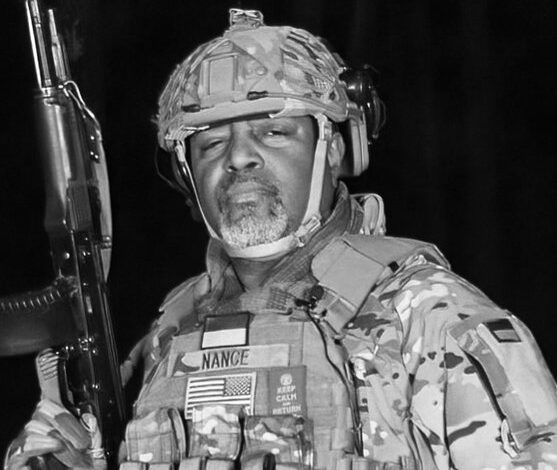‘I’m Done Talking,’ Terrorism Analyst Tells MSNBC
Baquet Praises ‘1619 Project’ as He Steps Down
Texas Anchor, 27, Loses Fight With Brain Cancer
Short Takes: No-knock warrants; Jim Crutchfield; disinformation and young Latino men; Tracy Jan; diminishing Latin American press freedom; jailing of Somali journalists.
Support Journal-isms‘I’m Done Talking,’ Terrorism Analyst Tells MSNBC
“Newly departed MSNBC foreign policy analyst Malcolm Nance revealed Monday evening that he is on the ground in Ukraine fighting the invading Russian forces,” Zachary Petrizzo and William Vaillancourt reported for the Daily Beast.
“Nance, a retired Naval intelligence officer, told Joy Reid on The ReidOut that he had joined the country’s international legion about a month ago.
“ ‘The more I saw of the war going on, the more I thought, “I’m done talking, all right? It’s time to take action here,” ‘ said Nance, suited up in a flak jacket and carrying an assault rifle. ‘I am here to help this country fight … what essentially is a war of extermination. This is an existential war and Russia has brought it to these people and they are mass murdering civilians, and there are people here like me who are here to do something about it.’ “
Russian missiles landed in the western Ukrainian city of Lviv as NBC News’ Ali Arouzi was interviewing Nance, NBC News reported on Twitter.
Russian missiles landed in the western Ukrainian city of Lviv as NBC News’ Ali Arouzi was interviewing MSNBC analyst Malcolm Nance. pic.twitter.com/rTnFAyjwsb
— MSNBC (@MSNBC) April 18, 2022
The Daily Beast continued, “Nance, the executive director of a think tank called the Terror Asymmetrics Project, was asked if the fact that he is a foreigner ‘poses any special danger’ to others there like himself.
“ ‘No, it doesn’t, because the war that’s being waged here is being waged against everybody,’ Nance said. ‘[The Russians] are not going around hunting for American flag patches or to see who’s Black, who’s Asian, who’s Latino.’
“In a subsequent exchange with The Daily Beast on Monday evening from what he said was a secure outpost in Ukraine, Nance said he was ‘touched’ when he first met his platoon.
“ ‘The international legion is one of the best-kept secrets in the country. That’s the story. They were higher-level people than I am. Most journalists have never seen an actual member or been following freelancers all over the battlefield. I really can’t tell you how diverse a group it really is. It is literally a multinational force of men and women who are here to defend Ukraine,’ the U.S. Navy veteran told The Daily Beast. ‘I was very touched when I met the first platoon and saw they were here for the right reasons.’
“ ‘They were not here just to get guns,’ he noted. . . .
“An MSNBC spokesperson told The Daily Beast that Nance is no longer an analyst for the network now that he has joined the international legion. . . .”
Nance spoke to the Journal-isms Roundtable March 1, just after the Russians followed through on their threat to invade Ukraine. He had just returned from a month in the country as part of his Terror Asymmetrics Project, in which he spoke with Ukrainian soldiers and analyzed the military capabilities of both sides.
“I think the Ukrainians are going to win this war because now that they have the resources coming from the West,” Nance told the group. “Their ammunition resupply, their anti-tank resupply is coming,” he said. “The Russians are marching in a way that is going to get them slaughtered.”
- Stacy M. Brown, National Newspaper Publishers Association: Black Lives Should Also Matter in the Russia-Ukraine War (April 12)
- Columbia Journalism Review: News coverage of Russia–Ukraine war
- Deutsche Welle: Hide standards in a suitcase: how and why Ukrainian the authorities restrict media freedom in war
- Reporters Without Borders: Stop pressuring journalists in Central Asia over Ukraine war coverage, RSF says
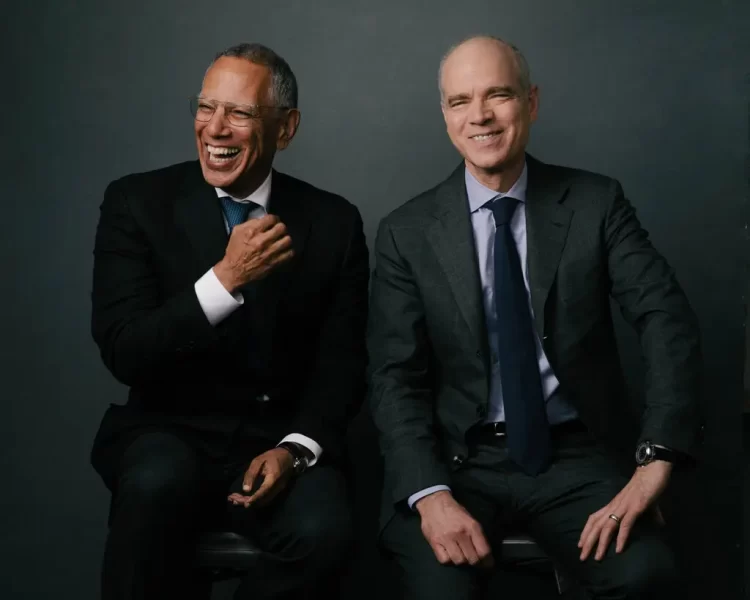
Baquet Praises ‘1619 Project’ as He Steps Down
Dean Baquet’s eight-year tenure as executive editor of The New York Times — he is the first African American in the role — is expected to conclude in June, Michael M. Grynbaum and Jim Windolf reported Tuesday for the Times.
Baquet is to be succeeded by Joseph F. Kahn, a Pulitzer Prize-winning China correspondent who rose to lead the international desk and then became managing editor, as Grynbaum noted in a profile.
Two years into Baquet’s tenure as top editor, then-public editor Liz Spayd blasted the “blinding whiteness” of the newsroom. Asked by Journal-isms Tuesday what he would say today, Baquet pointed to “the 1619 Project,” published in 2019 on his watch. “Today I would say we are a much more diverse newsroom, with a much more diverse leadership team,” he messaged. Of course we have work to do. But I’m not sure another newsroom could have produced the 1619 project, which is one of the most ambitious works of journalism anyone has published.”
[The 1619 Project creator, Nikole Hannah-Jones, replied on Twitter, “I haven’t told this story much, but I never aspired to work at the NYT. I simply didn’t dream that big and so never even applied here.Then one day Dean Baquet called me in & convinced me it shld be my home. Proud to have worked for the first Black editor of the NYT. An era ends.”]
Responding to a request, Baquet also listed journalists of color with leading positions in his newsroom: Marc Lacey, promoted to assistant managing editor, specializing in the Times’ live digital report; Monica Drake, an assistant managing editor, overseeing new digital features and projects; Randy Archibold, sports editor; Gilbert Cruz, culture editor; Jia Lynn Yang, national editor; deputy foreign editor Greg Winter; Nikita Stewart, real estate editor; Hanya Yanagihara, editor in chief of T Magazine, and “Probably others I’m forgetting.”
“Mr. Baquet — who, at 65, has reached the traditional age when executive editors at The Times step down — declined in an interview to comment on his plans,” Grynbaum and Windolf continued. In a memo on Tuesday, Publisher A.G. Sulzberger wrote only that Baquet “will remain at The Times to lead an exciting new venture.”
“The first Black executive editor of The Times, Mr. Baquet urged his journalists to pursue investigations that could yield the highest possible impact. He helped steer exposés of Mr. Trump’s decades-long tax avoidance and the sexual misconduct of the Fox News star Bill O’Reilly and the Hollywood mogul Harvey Weinstein, reporting that helped usher in a sea change in global attitudes toward workplace behavior.
“During Mr. Baquet’s tenure, readership swelled to roughly 10 million digital subscribers, from 966,000 in early 2014, as Mr. Sulzberger sought to reduce the paper’s reliance on a collapsing advertising market and emphasize revenue from paid subscriptions to the company’s digital products.”
Sulzberter, too, mentioned ‘1619’ among Baquet’s accomplishments.
“In the last eight years, Dean has fearlessly led The Times through an unbelievably challenging and consequential period, from guiding our transformation into a truly digital newsroom to confronting the escalating pressures on independent journalism to keeping pace with a historic flood of giant news stories. At the same time, Dean built the strongest investigative reporting operation on earth and oversaw a bounty of journalism that repeatedly changed the national conversation, from #MeToo, to ‘The Daily,’ to the 1619 Project, to our coverage of the Trump administration, COVID pandemic and conflict in Ukraine. . . .”
The news story went on “Mr. Baquet also navigated controversies inside and outside the paper. . . .”
- Clare Malone, the New Yorker: Dean Baquet Never Wanted to Be an Editor (Feb. 18)
- Kyle Pope, Columbia Journalism Review: Doubling down at the Times
Newsroom colleagues at KFDX-TV in Wichita Falls, Texas, remember Shatanya Clarke.
Texas Anchor, 27, Loses Fight With Brain Cancer
“Shatanya Clarke, a 27-year-old news anchor for the northern Texas TV station KFDX, died last Thursday following a fight with brain cancer,” Peter Sblendorio reported Monday for the Daily News in New York.
Her death was confirmed by the news station, where she had worked since 2018.
Adam P. Bradshaw, news director for the Wichita Falls, Texas, station, wrote Thursday, “Clarke, 27, passed away at her home Thursday morning. She had been battling brain cancer but was optimistic about upcoming medical treatments.
“A native of Jamaica, Shatanya joined KFDX in August of 2018 as a News Reporter and moved into the anchor chair last year. She hosted the station’s ‘Helping the Helpers’ franchise during the pandemic to make sure local charities received the donations they so badly needed.
“Ms. Clarke was heavily involved in the community as a volunteer for many organizations, including the Junior League of Wichita Falls. Along with station Photographer Brandon Cooper, Shatanya created the ‘Soups and Socks’ annual fundraiser for Faith Mission in Wichita Falls. She also served on the Child Care Partners’ board and was a mentor at Booker T. Washington Elementary School.
“Clarke attended Florida A&M University where she was a member of Zeta Phi Beta.
“ ‘Shatanya was a bigger-than-life spirit,’ said News Director Adam P. Bradshaw. “Her wit and personality could brighten anyone’s day. She had a passion for telling stories in a way that really hit home. To say our family and this community will miss her is the understatement of the year. ‘”
- Markeshia Jackson, KFDX-TV: Family, friends reflect on Shatanya Clarke’s life at vigil
Short Takes
- “Judges and magistrates are expected to review requests for no-knock warrants — one of the most intrusive and dangerous tactics available to law enforcement — to ensure that citizens are protected from unreasonable searches, as provided in the Fourth Amendment to the Constitution,” Nicole Dungca and Jenn Abelson reported Friday for The Washington Post. “But judges generally rely on the word of police officers and rarely question the merits of the requests, offering little resistance when they seek authorization for no-knocks, a Washington Post investigation has found. . . .”
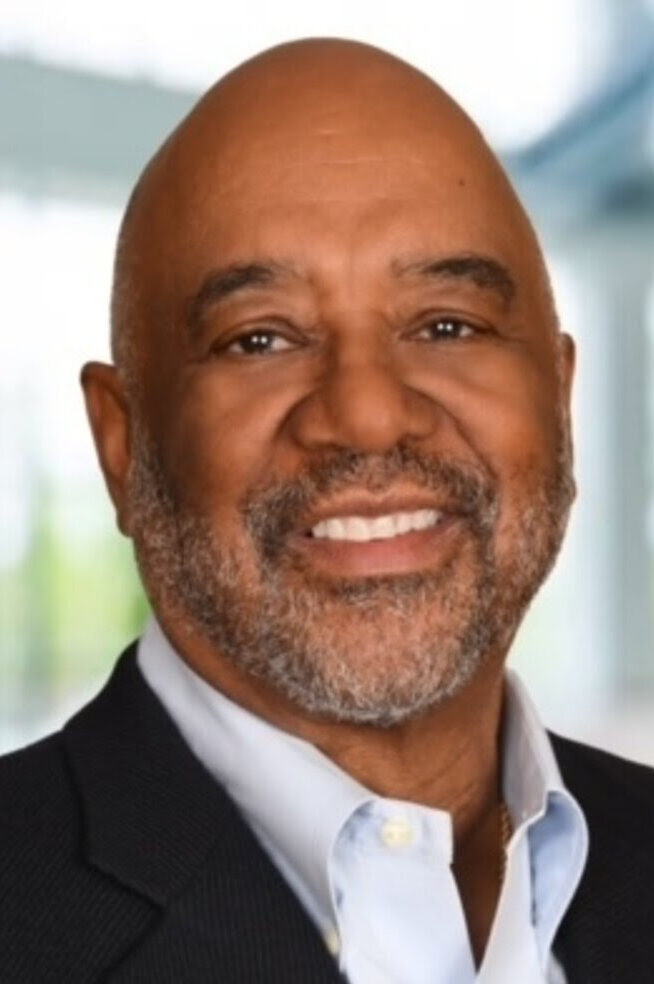 “Jim Crutchfield (pictured), an accomplished journalist who has led newsrooms across the country as both an editor and publisher, will become head of The Marshall Project’s local news operation in Cleveland,” the Project announced Tuesday. “Crutchfield will establish the organization’s first local news team, shape investigative and local engagement projects, and work in partnership with local journalists. . . .”
“Jim Crutchfield (pictured), an accomplished journalist who has led newsrooms across the country as both an editor and publisher, will become head of The Marshall Project’s local news operation in Cleveland,” the Project announced Tuesday. “Crutchfield will establish the organization’s first local news team, shape investigative and local engagement projects, and work in partnership with local journalists. . . .”
- “Media consumption habits of Latino men ages 18 to 35 make them ‘easy targets for racialized disinformation’ about immigrants and immigration policies, according to a report released Tuesday by United We Dream, the country’s largest immigrant advocacy network,” Nicole Acevedo reported Wednesday for NBC News. “In partnership with nonprofit media research group Harmony Labs, the study analyzed the content consumed by more than 300,000 Latinos across TV and digital platforms, in both English and Spanish, from January to August of last year. . . .”
 At The Washington Post, “Tracy Jan (pictured) is joining the Health and Science team as an assignment editor after a distinguished tour with Financial, where she wrote about the intersection of race and the economy,” the Post announced Monday. “Since coming to The Post in 2016, Tracy has produced a powerful line of coverage about race and power, exploring such issues as the #MeToo reckoning, reparations and systemic racism. . . .”
At The Washington Post, “Tracy Jan (pictured) is joining the Health and Science team as an assignment editor after a distinguished tour with Financial, where she wrote about the intersection of race and the economy,” the Post announced Monday. “Since coming to The Post in 2016, Tracy has produced a powerful line of coverage about race and power, exploring such issues as the #MeToo reckoning, reparations and systemic racism. . . .”
- “‘The panorama of freedom of the press in Latin America has only worsened, with a ‘sharpening of the repression” of independent journalism and ‘violence’ against journalists, Ricardo Trotti, executive director of the Inter-American Press Association (IAPA), said. IAPA will hold its semi-annual meeting from next Tuesday to Thursday,” the EFE news agency reported Monday. “In these first three months of the year, 13 journalists have been murdered in Latin America, 8 of them in Mexico, an alarming figure that reveals the ‘deficiency’ of the protection and security systems for these professionals. . . .”
- “Reporters Without Borders (RSF) and its local partner, the National Union of Somali Journalists (NUSOJ), condemn the continuing detention of 14 journalists, who were arrested yesterday in connection with their coverage of a prison riot in Somaliland, in northwestern Somalia, and call for their unconditional release,” the press freedom groups said Thursday. “The arrests, which are without precedent in recent years, began when reporters went to cover a riot in the main prison in Hargeisa, the capital of Somaliland, a self-proclaimed independent republic that is not recognised by the international community. . . .”
‘Negativity Toward Staffers’ Rising in Dallas
April 18, 2022
Morning News’ Katrice Hardy Says It’s Worst She’s Seen
Survey Confirms Blacks’ Sense of Connectedness
Editors Still Shy Away From Diversity Survey
NLA Honors 2 Who ‘Quietly Opened Doors’
Reporter Forced to Change Name Hasn’t Been Seen
NPR Boosts Diversity, Exit of Hosts Aside
Gracie Honorees Include Seattle Reporter
Not Your Parents’ Real Estate Section
Homepage photo: Katrice Hardy, Dallas Morning News editor, speaks at a Dallas church as part of her effort to build better community ties. (Credit: Facebook)
Support Journal-ismsMorning News’ Hardy Says It’s Worst She’s Seen
Katrice Hardy became executive editor at the Dallas Morning News last summer — the first African American in the top role — but she says that while “the last few months of the Dallas Morning News [have] been very rewarding . . . what I’ve also experienced is more negativity and more criticism of staffers than I’ve ever experienced in my life.”
Hardy, who had been executive editor of the Indianapolis Star and managing editor of the Virginian-Pilot in Norfolk, spoke this month at the Knight Foundation’s International Symposium on Online Journalism in Austin, Texas.
“I’ll walk you through a couple of examples,” Hardy continued. “One was, there’s a man in our community who decided to pretend that he was a journalist. So he sent a FOIA [Freedom of Information Act] request to a local school division. The FOIA request went to someone who thought, ‘You know I don’t know this reporter. This request seems unusual. Let me contact the DMN to find out if this guy actually works for them.’ Turns out he didn’t, so we sent him basically a cease-and-desist email saying stop pretending to be us.
“What he responded back to the editor who sent that email to him was, ‘I know where you live. I know where your sister lives. I plan to protest you. I plan to continue to threaten you. And I plan to continue to do these things in ways that the cops pretty much won’t be able to do anything about it.”
Hardy went on to say that another reporter was stalked when she “wrote about a political candidate and some interesting things that he probably didn’t want revealed,” and cited another journalist who was “pretty much cyber-attacked.
“We write these stories because we believe in democracy, right? But the criticism our reporters are facing, our journalists are facing, the negativity they’re facing is. . . . an all-time serious issue in that, how can we protect them? How can we continue to do the work we’re doing when — you think about January 6 — many in our community are not afraid to attack us in ways they’ve never done before.”
Hardy, who heads Diversity Initiative committee for the News Leaders Association, said that in addition to beefing up security, she is working to build community trust.

“We’re trying to get some training for our journalists on how to navigate their lives on social, how to protect themselves and we’re also trying to build better resources and connections with our community.
“I speak quite often — I attend quite often events that we’ve never been present for. I go out and I speak at churches.
“I attend galas. I try to impart upon our community the mission that we believe in and why, whether you believe in the content we’re writing or not, [or] you think we should be spending time on that, we’re doing it for the greater good of all.”
The two-day conference, virtual-only for the last two years because of the pandemic, was hybrid this year, with 1,227 registrants, 296 in person and 931 online, the group said.
” In-person registrants represented 21 countries, from the U.S. to Argentina, from Hong Kong to Norway. Virtual registrants came from 90 countries, including Brazil, Kenya, Philippines and Spain.”
- Jim Brady, News@Knight: Should metro dailies be replaced by nonprofits or for-profits? (April 11)
- Carolina de Assis, LatAm Journalism Review: Attention to diversity must include investment in talent development in newsrooms, panelists at ISOJ said
- Carolina de Assis, LatAm Journalism Review: Dallas Morning News executive editor talks about fostering community, connection and change through journalism
- Silvia DalBen Furtado, LatAm Journalism Review: Journalists discussed at ISOJ 2022 challenges to press freedom in Latin America and Asia
- Sierra Juarez, LatAm Journalism Review: Fact-checking initiative Factchequeado aims to combat misinformation in Hispanic communities in the US (April 5)
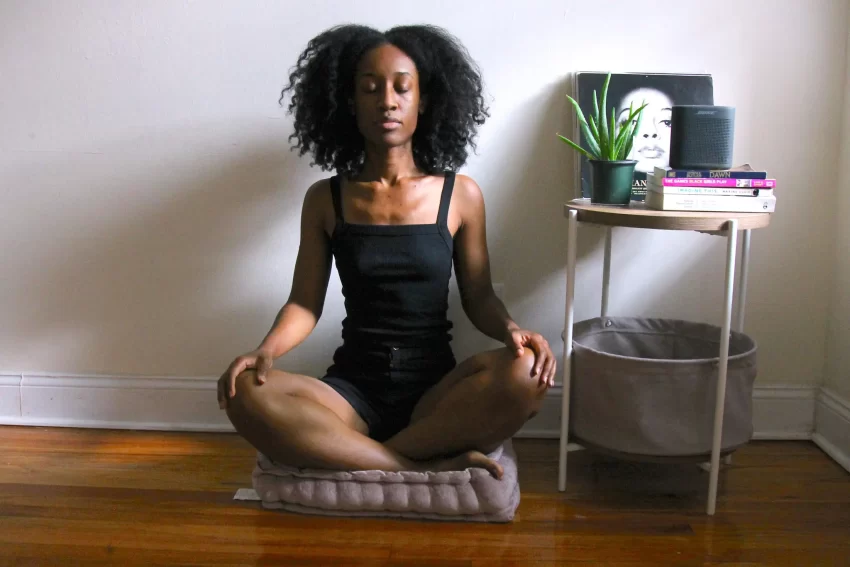
Natelegé Whaley, a freelance journalist, said: “No one is really thinking about
whether Black freelancers have the resources they need to stay sane during this
time.” (Credit: New York Times)
Survey Confirms Blacks’ Sense of Connectedness
Take note if you’ve ever been asked, “Why do you write so much about race?” or the false choice from an earlier era, “Are you Black first or a journalist first?”
Ditto the trauma many Black journalists felt after the police killings in 2020 of George Floyd and Breonna Taylor.
“New analysis from Pew Research Center released today finds that significant majorities of Black Americans – no matter where they are from, who they are, their economic circumstances or educational backgrounds – say being Black is extremely or very important to how they think about themselves,” Pew announced Thursday in an advance email. “This is the Center’s latest major report in a series focused on understanding the rich diversity of Black adults in the U.S.
“A significant share of Black Americans from diverse experiences and backgrounds also say that when something happens to Black people in their local communities, across the nation or around the globe, it affects what happens in their own lives, highlighting a sense of connectedness.
“In addition to personal identity and intra-racial connections, the survey explores respondents’ knowledge of their family’s history and experience with slavery, as well as their knowledge of Black history, their place and community, and the important issues they face.
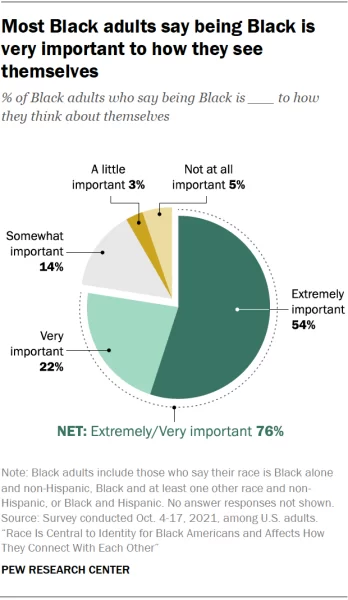
“A majority of non-Hispanic Black Americans (78%) say being Black is very or extremely important to how they think about themselves. This racial group is the largest among Black adults, accounting for 87% of the Black population, according to 2019 Census Bureau estimates. But among other Black Americans, roughly six-in-ten multiracial (57%) and Hispanic (58%) Black adults say this. . . .
“While majorities of all age groups of Black people say being Black shapes how they think about themselves, younger Black Americans are less likely to say this: Black adults ages 50 and older are more likely than Black adults ages 18 to 29 to say that being Black is very or extremely important to how they think of themselves. Specifically, 76% of Black adults ages 30 to 49, 80% of those 50 to 64 and 83% of those 65 and older hold this view, while only 63% of those under 30 do. . . .”
The survey also offered a tip on priorities for coverage:
“Violence, the economy and housing top the list of important community issues for Black Americans, but the most important local issue across demographic subgroups of Black Americans varies.
“The top issue identified in an open-ended question was violence or crime (17%). This includes Black Americans who listed specific issues such as drug activity, shootings, or theft, as well as those who simply listed ‘violence’ or ‘crime’ as the most pressing issues in their communities.
“Another 11% of Black adults said economic issues such homelessness, poverty and taxes were most important. Other top issues include housing (7%), COVID-19 and public health (6%), infrastructure (5%), neighbors (4%), the availability of public safety and emergency services (3%), differences among neighbors due to racism, diversity or culture (3%), and employment and wages (3%). . . .”
Separately, “the National Urban League released its annual report on the State of Black America on Tuesday, and its findings are grim,” Michael Warren reported for the Associated Press. “This year’s Equality Index shows Black people still get only 73.9% of the American pie white people enjoy.
“While Black people have made economic and health gains, they’ve slipped further behind white people in education, social justice and civic engagement since this index was launched in 2005. A compendium of average outcomes by race in many aspects of life, it shows just how hard it is for people of color to overcome systemic racism, the civil rights organization says. . . .”
- Jon Allsop, Columbia Journalism Review: Confronting racism within the press (June 5, 2020)
- Greg Braxton, Los Angeles Times: Media images of Black death come at a cost, experts say. And many viewers are fed up (April 19, 2021)
- As told to Mattie Kahn, Glamour: 8 Journalists on Reporting While Black, With the Weight of History on Their Shoulders (June 3, 2020)
- Patrice Peck, New York Times: Self-Care for Black Journalists (July 14, 2020; updated July 15)
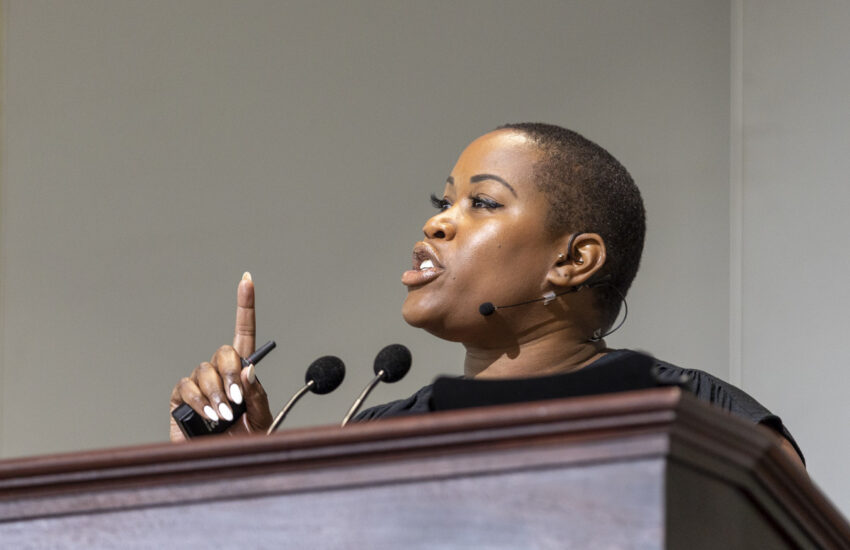
Editors Still Shy Away From Diversity Survey
“It feels like supreme hypocrisy on the part of the journalism industry,” said Meredith Clark, a professor at Northeastern University who has been the survey’s lead researcher since 2018. “Transparency and doing the digging and the reporting — all of that is so germane to what we understand journalism to be. And we are absolutely unwilling to do it among ourselves.” Clark has resigned from the project.
The 303 figure for newspaper and online-news participants is down from the 429 that responded in 2019 and prompted the survey to “pause” due to low participation, Scire wrote. “(The 2018 survey — the historic low-water mark for participation — had 293 news organizations respond, a response rate around 17%.)
“The report . . . will count 12,781 journalists from the 303 participating newsrooms. Even without this year’s final report in hand, it’s hard not to question the future of the survey,” Scire continued.
“The two-year long ‘pause’ to retool the survey didn’t help. Pushing the deadline to participate back again and again didn’t work. Historic protests and an industry-wide conversation about race and representation did not spontaneously prompt many more news organizations to respond.
“Clark, who told NLA this year that she plans to step away from the diversity survey, was candid about where she thinks the project falls down.
“ ‘What has become abundantly clear to me is that diversity can never be a measure of goodwill. You don’t get to transparency about diversity by relying on people’s goodwill,’ Clark said.
” ‘Ultimately, that’s what the design of the newsroom diversity survey at the organizational level does. It’s driven by relationships. It’s driven by political will. It’s driven by those journalists, and leaders within journalism, who are willing to withstand criticism about the progress that they may have not made, and willing to do some introspection about where they need to improve. That is not tenable and that is the reason that we continue to see declining numbers of participation.’ ”
In local television news, the Radio-Television News Association reported last June that people of color make up 27.7% of the local TV news workforce, up 1.1 percentage points from the previous year’s record high.
In a study for Associated Press Sports Editors, The Institute for Diversity and Ethics in Sport, known as TIDES, led by Richard Lapchick, reported in September that 79.2 percent of the sports editors were white and 83.3 percent were men, and that 77.1 percent of the reporters were white; 85.6 percent were men.

NLA Honors 2 Who ‘Quietly Opened Doors’
S. Mitra Kalita (pictured), a former CNN executive, has worked in local, national and global journalism. Last year, she created the determinedly local epicenter-nyc.com and co-founded url-media.com. Now she has been chosen the 2022 News Leader of the Year by the News leaders Association.
 “We are equally honored to recognize Norberto Santana Jr. (pictured, below), publisher and editor-in-chief of the Voice of Orange County, as the winner of the 2022 Robert G. McGruder Award for Diversity Leadership,” the group said.
“We are equally honored to recognize Norberto Santana Jr. (pictured, below), publisher and editor-in-chief of the Voice of Orange County, as the winner of the 2022 Robert G. McGruder Award for Diversity Leadership,” the group said.
“Mitra and Norberto have quietly opened doors for so many in our industry. They are leaders with an unwavering commitment to elevate others and strengthen their communities.”
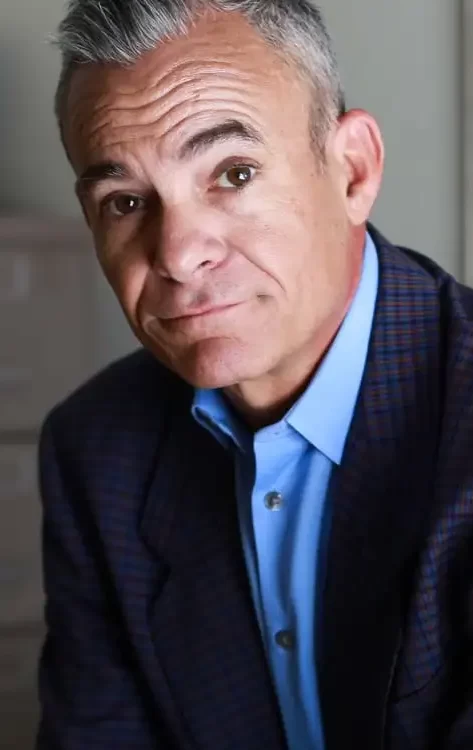 Kristen Hare of the Poynter Institute wrote of Kalita in February 2021: “In January, she and Philadelphia radio executive Sara Lomax-Reese co-founded URL Media, a network of Black and Brown media organizations. URL stands for Uplift, Respect and Love. The inaugural members include Epicenter-NYC; WURD in Philadelphia; Scalawag in the South; The Haitian Times, based in Brooklyn; Documented, which covers immigrants and immigration policy in New York; TBN24, a television network that airs in Bangla; and Palabra, a network of freelance journalists from the National Association of Hispanic Journalists.”
Kristen Hare of the Poynter Institute wrote of Kalita in February 2021: “In January, she and Philadelphia radio executive Sara Lomax-Reese co-founded URL Media, a network of Black and Brown media organizations. URL stands for Uplift, Respect and Love. The inaugural members include Epicenter-NYC; WURD in Philadelphia; Scalawag in the South; The Haitian Times, based in Brooklyn; Documented, which covers immigrants and immigration policy in New York; TBN24, a television network that airs in Bangla; and Palabra, a network of freelance journalists from the National Association of Hispanic Journalists.”
Santana’s readers, at the Voice of Orange County, “are in an area roiled by the ‘irrationality’ of America’s immigration crisis,“ David Beard wrote in 2017 for Poynter. “He gets panicked phone calls, and sees a heightened fear toward police, hospital workers and court officials.”
Separately, Meribah Knight, senior reporter/producer of special projects and Nashville Public Radio’s WPLN News, and Ken Armstrong, reporter for ProPublica, won the NLA’s Dori J. Maynard Justice Award. The honor recognizes reporting on social justice issues. “Judges give weight to journalism that shines a light on ignorance, stereotypes, intolerance, racism, hate, negligence, inequality and systemic obstacles.”
The winning work was “Black Children Were Jailed for a Crime That Doesn’t Exist. Almost Nothing Happened to the Adults in Charge.” The judges said:
“This is what they uncovered: Police officers arrested four Black girls at an elementary school in Murfreesboro . . . The children were arrested for a crime that does not exist, in an investigation led by a police officer who had been disciplined 37 times, on charges approved by judicial commissioners without law degrees, in a system overseen by a judge who failed the bar exam four times, in a county where the policy for detaining kids violated Tennessee law but that state inspectors didn’t stop year after year. The reporters also discovered that Rutherford County jailed kids in 48% of the cases.
“This is truly impactful reporting of a civil rights issue that was being ignored. . . .”
Also significant was NLA’s Punch Sulzberger Innovator of the Year Award, citing ” “Printing Hate,” ” a thorough exploration of the racist pasts of newspapers,” by students at the University of Maryland Philip Merrill College of Journalism, Howard Center for Investigative Journalism. The project was directed by DeNeen L. Brown, a Washington Post reporter who teaches at the school, and retired Post editors Milton Coleman and Deborah Heard, former Los Angeles Times and St. Louis Post-Dispatch reporter Ron Harris, and Washington poet and lawyer CeLillianne Green; along with faculty and staff from UMD and Arkansas.
The judges said, “Picking up where Ida B. Wells left off, this is an exceptional exercise in journalistic accountability and a memory project for the ages. An innovative collaboration involving students at five HBCUs, the University of Arkansas, and Black newspaper publishers, this project used data as a time-travel tool.
“The journalists scraped more than 150,000 newspapers to showcase the racist coverage of horrific lynchings. The database allows users to filter varying types of harmful coverage — including reporting that attempted to justify, and even organize, acts of state-abetted racial terror. The resulting 40,000 pages of verified data and accompanying stories amount to a powerful tool of historical inquiry. This project says a great deal about the kind of world that newspapers helped create and the more honest, rigorous, accurate and morally informed future that communities can envision — together.”
Reporter Forced to Change Name Hasn’t Been Seen
 “It has been several weeks since viewers have seen Siemny Kim (pictured),” Jason Remington wrote April 9 for Puget Sound Media in Seattle. “A few of her social media posts might explain where her head is at… her bio has been removed from the KIRO 7 website. Her social media posts have come to a halt.
“It has been several weeks since viewers have seen Siemny Kim (pictured),” Jason Remington wrote April 9 for Puget Sound Media in Seattle. “A few of her social media posts might explain where her head is at… her bio has been removed from the KIRO 7 website. Her social media posts have come to a halt.
“December 2021 — Gratitude post: I’ve been silent on social media for the last few months. To be honest, I haven’t felt very joyful. To post – felt disingenuous.
“… Behind this smile – has been a few dark months triggered by my post back in March about having to change my name at KIRO.
“I’ve been struggling with the intersectionality of how race and gender have affected my life and the decisions I have made.”
When the story broke last year, Rachel Belle of KIRO Radio in Seattle told of the satisfaction another journalist found after she was allowed to keep her name.
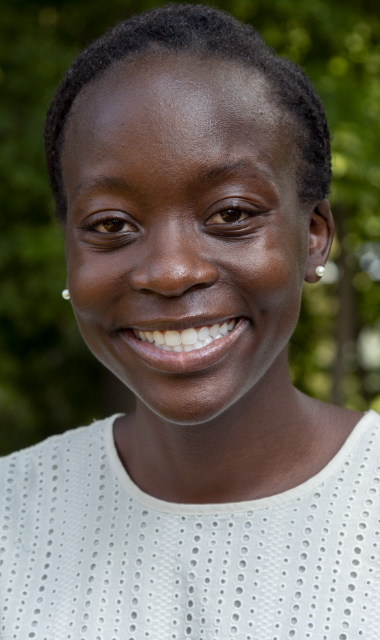 “Adora Namigadde (pictured) is a first generation Ugandan-American. In 2014, she had a new job reporting at a TV station.
“Adora Namigadde (pictured) is a first generation Ugandan-American. In 2014, she had a new job reporting at a TV station.
“ ‘One day, my news director brought me into his office, I had just started there,’ Namigadde said. ‘He said, “Hey, so I was thinking maybe we could work on something that we could use on-air that’s different from Namigadde so that your name is more relatable to our audience.”
“Namigadde was only 22 years old, she didn’t push back.
“ ‘I was honestly so nervous, just starting out in my career, so happy to have my foot in the door. I felt a little strange for the ask, but I told him that I would want to talk to my parents about it before I did that,’ she said. ‘So I talked to my parents and they were like, “What! If you don’t use the name Namigadde then no one will know you’re Ugandan!” Which now, reading between the lines, was kind of the point. My parents were outraged at the thought and they were like, absolutely not.’
“Unlike Siemny’s story, Namigadde’s boss let her keep her name and the subject was never brought up again. . . .”
Namigadde is 29 and now works as a Metro reporter at WBEZ-FM in Chicago.
“ ‘Whenever my stuff would air on national, I would get a lot of messages from Ugandans all over the country being like, “Oh my gosh! I was driving home from work and then I heard the name Namigadde and I could not believe my ears! I had to look you up right away and send you this message, I’ve never heard a Ugandan on the air before. It was just such a cool experience, thank you for doing what you do.” Those messages are awesome,’ Namigadde said.”
- Sequoia Carrillo and Anya Steinberg, NPR: A Chinese student Americanized her name to fit in. It took more to feel she belonged (April 11)
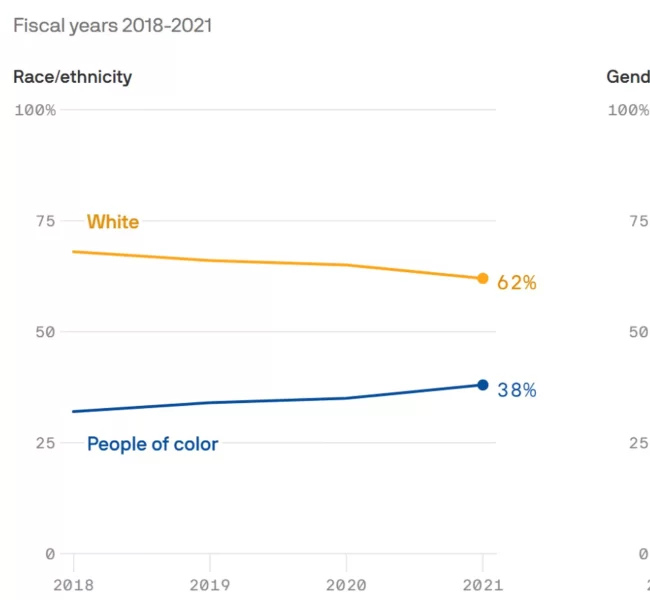
NPR Boosts Diversity, Exit of Hosts Aside
“More than half of NPR’s leadership team (53%) is comprised of non-white executives, up from 9% in 2019, NPR CEO John Lansing tells Axios,” Sara Fischer reported Tuesday for Axios.
“Why it matters: A slew of high-profile departures over the past year has shed light on ways talent — particularly women and people of color — are elevated and incentivized to stay with the public radio broadcaster.” Those exiting have included hosts Audie Cornish, Sam Sanders, Noel King, Lulu Garcia-Navarro and Shereen Marisol Meraji.
“Details: In an interview, Lansing and NPR’s newly-appointed chief operating officer Will Lee noted that the efforts aren’t just a moral imperative, but a business priority.
“The issue is the median age for an NPR listener is 58 -years-old and 80-plus percent white,” Lansing said. “If that’s the next fifty years for NPR, then we will only get smaller and smaller.”
“To become more relevant, ‘you sort of reverse engineer backwards,’ he added.”
“NPR’s podcast audience, by comparison, is much younger and more diverse. . . .”
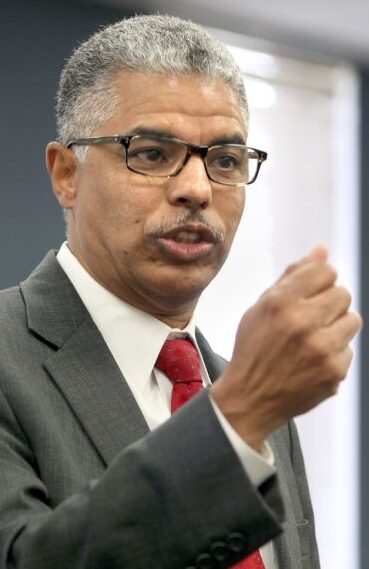 Separately, Keith Woods (pictured), NPR chief diversity officer, told a journalism conference that a new tool NPR is using to track the demographics of sources in real time has resulted in significant gains.
Separately, Keith Woods (pictured), NPR chief diversity officer, told a journalism conference that a new tool NPR is using to track the demographics of sources in real time has resulted in significant gains.
As Angela Fu reported for the Poynter Institute last year, “Dubbed Dex (after ‘Rolodex’), the tool is attached to NPR’s content management system. For each story, reporters, producers, correspondents and editors submit information about their sources’ race and ethnicity, gender identity, geographic location and age range.”
The results so far, Woods said April 1 at the Knight Foundation’s International Symposium on Online Journalism in Austin, Texas (video):
In 2013, 28 percent of sources were female; 41 percent in 2021.
In 2013, 80 percent of all sources were white; 69 percent white in 2021.
In 2013, sources of color represented 2 percent or more of sources in only eight states plus the District of Columbia. In 2021, it was 21 states plus D.C.
Woods added, “Each time . . . we’ve gotten this data, we’ve gone back to our organization and said here’s how we’re doing, and allowed our journalists to begin to make some adjustments.”
One issue that needs work is using sources in stories not related to the sources’ identities, Woods said.
“When journalists think diversity or inclusion, there is a sort of immediate association with stories that are about race or ethnicity or if you’re talking about gender identity, then trans journalists in stories that are about and for trans
people. It is putting women in stories that are about women, so that when we begin to dissect the data, we can see a lot of the trends that go beyond the simple numbers, and as I said, gives us an opportunity to start making some corrections.”
Deborah Horne reports on a Seattle production of “Fannie: The Music and Life of Fannie Lou Hamer,” an homage to the Mississippi civil rights hero by Cheryl West, a Seattle-based playwright.
Gracie Honorees Include Seattle Reporter
“For more than 30 years, KIRO 7′s Deborah Horne has been a trailblazer in covering issues of diversity and inclusion in the Pacific Northwest,” her Seattle station reported Wednesday.
“On Wednesday, she was named Local Reporter of the Year by the Alliance for Women in Media Foundation and is set to fly to New York to be honored at the 2022 Gracie Awards.
“The Gracies recognize individual achievement and exemplary programming created by, for and about women in all facets of media and entertainment.
“In 1994, Ms. Horne created and hosted the four-time Emmy Award winning show, KIRO InColor, a public affairs show that not only celebrated diversity, but put crucial issues involving race, gender and politics under the microscope. She was also the creator and executive producer of a nationally-recognized women’s show, KIRO Backstage.
“Today, she continues her commitment to telling stories of those who have not often been heard.
“Ms. Horne is a member of the advisory panel for Western Washington Gets Real, KIRO 7′s initiative to dig deep into important issues about systemic racism.
“Some of Ms. Horne’s work includes the story of a Black Seattle detective working to bridge the gap between police and children in underserved communities through the game of chess.
“She was also the only reporter requested to sit down with Martin Luther King III for an interview marking the 60th anniversary of his father’s only visit to Seattle.
“Ms. Horne is a passionate pillar in the Western Washington community who has also spent much of her career volunteering for organizations helping victims of domestic abuse.”
The annual award — named for the late comedian Gracie Allen — recognizes exemplary programming created by, for and about women in radio, television, cable, and interactive media. Honorees are selected in national, local and student markets, including both commercial and non-commercial outlets.
Mark Mwachiro added for TVNewser: “48 Hours received two awards, with the first award being earned in the Investigative Feature (TV-National) category for its A Promise to Ahmaud episode, reported by Omar Villafranca.
“Also receiving two awards was CBS News Radio. It earned its first award in the Crisis Coverage/Breaking News (Radio-National Syndicated Commercial) category for its Fall of Afghanistan coverage, led by reporter Cami McCormick and news anchor Steven Kathan.
“The second award was an individual honor award, which went to news anchor Allison Keys of the CBS News Weekend Roundup. She earned the Weekend Host/Personality-News (Radio-Nationally Syndicated Commercial) honor.
“Linsey Davis, who anchors both ABC News Live and the Sunday edition of World News Tonight, won the Gracies’ On-Air Talent–News Magazine [TV–National] category, while her ABC News colleague Tamron Hall won the On-Air Talent–Entertainment [TV National] category, and ABC News producer/investigative journalist Tonya Simpson won the Producer–News [TV-National] category. . . . “
“NBC Nightly News with Lester Holt won the News Feature Series [TV-National] category for Custody Dispute, and MSNBC Films, Cinemation Studios, NBC News Studios won the Non-Fiction Entertainment [TV-National] category for Stories We Tell: The Fertility Secret. . . .”
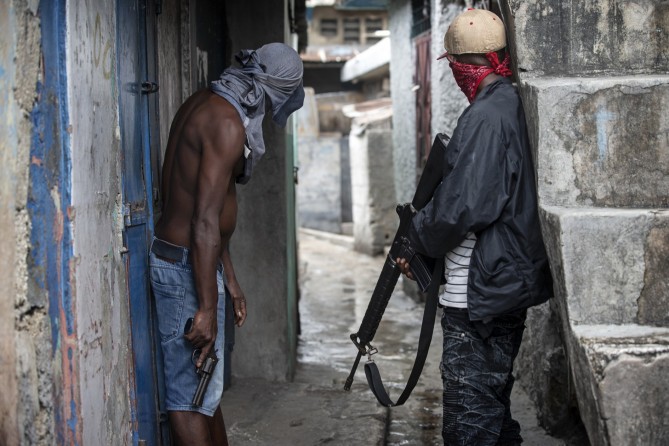
Not Your Parents’ Real Estate Section
The story of Dieu-Nalio Chéry is not one you would expect in the real-estate section. Chéry “never thought he would leave Haiti, much less that his journey would take him to a high-rise apartment building a block from the Hudson River,” begins D.W. Gibson’s April 11 story in The New York Times.
“He grew up in the countryside and moved to the big city, Port-au-Prince, where he taught himself photography and became a photojournalist. He joined The Associated Press in 2010 and documented the aftermath of the earthquake that destroyed so much of his country that year. Over the next decade, he would win several international awards, covering more tumult across the country — evictions, hurricanes, another major earthquake and mounting political unrest. ‘I saw the rise of violence,’ Mr. Chéry said. ‘There’s no respect for human life.’ ”
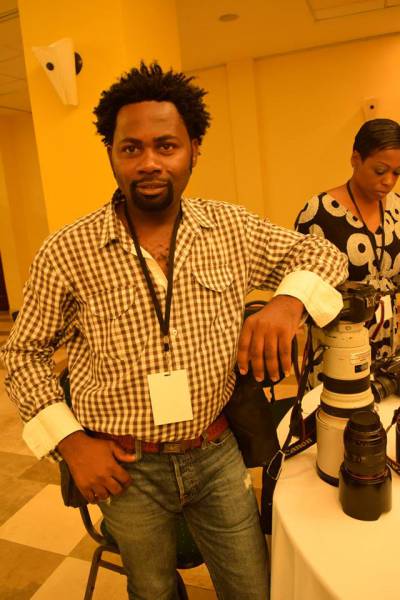 When a Haitian gang targeted Chéry (pictured) over some of the photographs he was taking, he knew it was time to leave. But where?
When a Haitian gang targeted Chéry (pictured) over some of the photographs he was taking, he knew it was time to leave. But where?
“The Magnum Foundation, a nonprofit that promotes diversity through documentary photography, had previously given Mr. Chéry a scholarship, so he reached out to them for help getting into the United States. In a matter of weeks, the foundation, working with Open Society Foundations, a global grant-making network, and City University of New York, secured entry visas for Mr. Chéry and his family.
“But there was still the matter of finding a place to live. Mr. Chéry contacted every organization he thought might be willing to help. That’s when the New York City Artist Safe Haven Residency Program stepped in. Founded in 2017, the program is a coalition of several arts and free expression advocacy organizations that work to house, integrate and nurture visual artists, musicians, writers and other artists who are at risk because of their work.” (Photo credit: (c) D.R./South Planet)
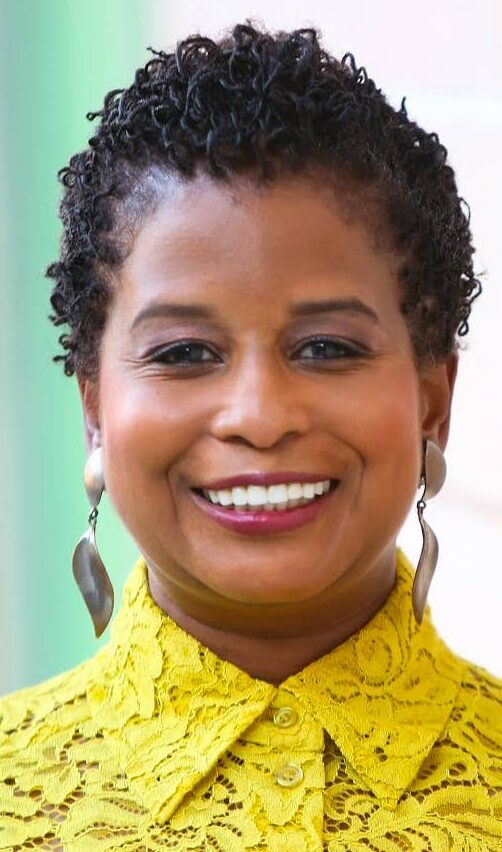 Chéry’s saga became a real-estate story. When the Times named Nikita Stewart (pictured) its real estate editor in December, Assistant Managing Editor Sam Sifton said, “The business and culture of Real Estate is the business and culture of civilization itself: where we live, where we want to live, what makes that difficult, what makes that possible, what makes that joyous.” Stewart “will help reinvent coverage of a subject that deeply captivates our audience.”
Chéry’s saga became a real-estate story. When the Times named Nikita Stewart (pictured) its real estate editor in December, Assistant Managing Editor Sam Sifton said, “The business and culture of Real Estate is the business and culture of civilization itself: where we live, where we want to live, what makes that difficult, what makes that possible, what makes that joyous.” Stewart “will help reinvent coverage of a subject that deeply captivates our audience.”
In March, the section featured a story by Veronica Chambers on Harlem Toile de Jouy wallpaper.
Chambers wrote, “The wallpaper, which was created by the celebrated interior designer Sheila Bridges in 2006, features beautiful drawings of African Americans in the lush, historical settings that rarely featured them — a couple in 18th-century dress dance under a structure that recalls the Arc de Triomphe to the tunes of a boombox that rests playfully on the grass; women in ball gowns sit under a majestic tree, one combs the other’s hair while yet another woman holds up a fairy-talelike mirror; a courting couple in fashion that now brings to mind the popular series ‘Bridgerton’ feast on a picnic.
“For a Black girl who grew up loving Jane Austen and Toni Morrison with equal aplomb, Harlem Toile was more than wallpaper. It was a tableau of possibility and belonging.”
The same day, the section published Julie Lasky’s question-and-answer session with Bridges, “a creative beacon for Bill Clinton, Tom Clancy and Sean (Diddy) Combs, the hip-hop mogul currently known as Love,” discussing the “1,600-square-foot village house near Hudson, N.Y., that was built for her from scratch.”
Editor Stewart said of the stories, “They were a triumph. Readers loved them.”
To subscribe at no cost, please send an email to journal-isms+subscribe@groups.io and say who you are.
Facebook users: “Like” “Richard Prince’s Journal-isms” on Facebook.
Follow Richard Prince on Twitter @princeeditor
Richard Prince’s Journal-isms originates from Washington. It began in print before most of us knew what the internet was, and it would like to be referred to as a “column.” Any views expressed in the column are those of the person or organization quoted and not those of any other entity. Send tips, comments and concerns to Richard Prince at journal-isms+owner@
View previous columns (after Feb. 13, 2016).
View previous columns (before Feb. 13, 2016)
- Diversity’s Greatest Hits, 2018 (Jan. 4, 2019)
- Book Notes: Is Taking a Knee Really All That? (Dec. 20, 2018)
- Book Notes: Challenging ’45’ and Proudly Telling the Story (Dec. 18, 2018)
- Book Notes: Get Down With the Legends! (Dec. 11, 2018)
- Journalist Richard Prince w/Joe Madison (Sirius XM, April 18, 2018) (podcast)
- Richard Prince (journalist) (Wikipedia entry)
- February 2018 Podcast: Richard “Dick” Prince on the need for newsroom diversity (Gabriel Greschler, Student Press Law Center, Feb. 26, 2018)
- Diversity’s Greatest Hits, 2017 — Where Will They Take Us in the Year Ahead?
- Book Notes: Best Sellers, Uncovered Treasures, Overlooked History (Dec. 19, 2017)
- An advocate for diversity in the media is still pressing for representation, (Courtland Milloy, Washington Post, Nov. 28, 2017)
- Morgan Global Journalism Review: Journal-isms Journeys On (Aug. 31, 2017)
- Diversity’s Greatest Hits, 2016
- Book Notes: 16 Writers Dish About ‘Chelle,’ the First Lady
- Book Notes: From Coretta to Barack, and in Search of the Godfather
- Journal-isms’ Richard Prince Wants Your Ideas (FishbowlDC, Feb. 26, 2016)
- “JOURNAL-ISMS” IS LATEST TO BEAR BRUNT OF INDUSTRY’S ECONOMIC WOES (Feb. 19, 2016)
- Richard Prince with Charlayne Hunter-Gault, “PBS NewsHour,” “What stagnant diversity means for America’s newsrooms” (Dec. 15, 2015)
- Book Notes: Journalists Follow Their Passions
- Book Notes: Journalists Who Rocked Their World
- Book Notes: Hands Up! Read This!
- Book Notes: New Cosby Bio Looks Like a Best-Seller
- Journo-diversity advocate turns attention to Ezra Klein project (Erik Wemple, Washington Post, March 5, 2014)
When you shop @AmazonSmile, Amazon will make a donation to Journal-Isms Inc. https://t.co/OFkE3Gu0eK
— Richard Prince (@princeeditor) March 16, 2018

